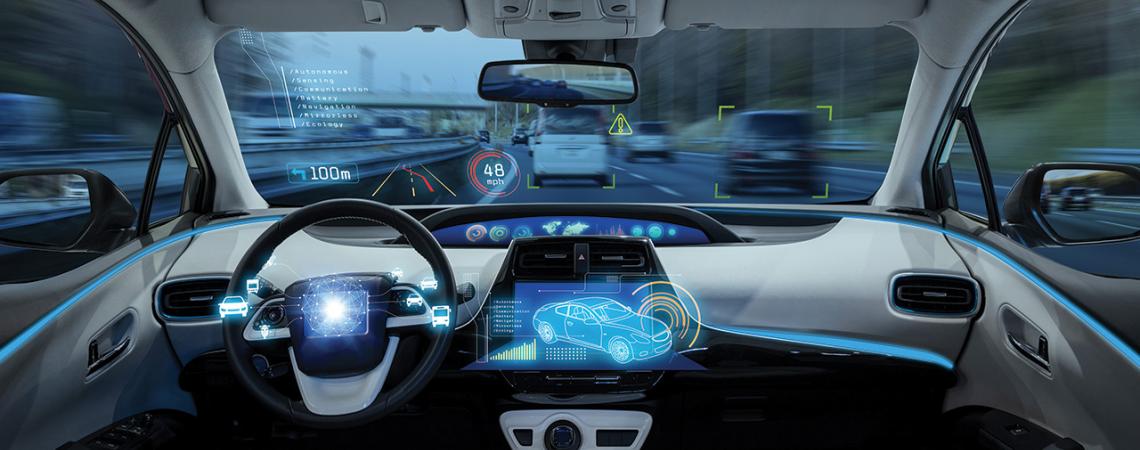It’s a matter of when – not if – self-driving cars become commonplace on American roads. (Credit: Getty Images)
In a few years, you may be able to spend your morning commute reading a book, checking e-mail, or even napping, thanks to self-driving car technology.
While they aren’t exactly as high-functioning as KITT, the crime-fighting black Camaro from the old Knight Rider TV series, autonomous vehicles from the likes of Google, Tesla, and other companies have proven that we are on the cusp of being able to take our hands off the wheel.
There could be as many as 10 million driverless cars and trucks on the road by 2020, according to some estimates, but Ohio has already seen its fair share of them thanks to the massive Transportation Research Center (TRC) in East Liberty, a 4,500-acre proving ground that is the largest and most advanced facility of its kind in the U.S.
Ohio’s role in the development of self-driving cars goes even deeper than that. In fact, researchers at The Ohio State University built and tested some of the earliest autonomous vehicle systems in the 1960s.
The electronic highway
Engineers have experimented with automated driving and speed control systems since the 1920s. OSU’s work began in the early 1960s, when an engineering student named Robert Fenton started investigating ways to improve driver performance and reduce traffic congestion.
Fenton and other researchers at OSU created a test car that could be operated with a joystick controller within the vehicle. A hydraulic system operated the throttle, brakes, and steering, all managed by a computer that took up the entire trunk. That work then led to the creation of one of the first self-driving cars, which could be guided down the highway using electronics built into the surface of the road.
The OSU team also tested radar systems that could bounce signals off of the guard rail in order to guide the automated vehicles.
“The difficulty with both of those approaches was that it required cooperation from the road, and our sponsors with the Federal Highway Administration didn’t want that,” Fenton says. “They didn’t want to deal with the expense and maintenance associated with the buried wire.”
Rhodes’s gambit
Fenton and his team tested vehicles everywhere from the parking lot of St. John Arena on the OSU campus to stretches of the then-newly constructed I-270 outerbelt. Lack of available test tracks eventually led to the creation of the TRC.
“We put together a dog-and-pony show for (then-governor) Jim Rhodes, and we had a nice little model and we told him it would cost no more than $3 million,” Fenton remembers. “He stood back and said, ‘You know, the trouble with you academics is you don’t think big enough.'”
In 1968, the state passed a bond issue for more than 10 times the original proposed budget. A few years later, the TRC played a key role in convincing Honda executives to build a new plant near the East Liberty location. “Rhodes did that because he thought it could bring jobs to Ohio,” Fenton says. “It brought the Honda plant and a lot of other auxiliary stuff. It was a brilliant political move on his part.”
What’s next?
Work on self-driving cars continued in fits and starts until the mid-2000s when work by Google and others emerged. Fenton (who has been retired for decades) is now considered a pioneer in the field, and OSU has remained a leader in self-driving car research.
In 2017, OSU and the State of Ohio announced a $45 million expansion of the TRC that includes a 540-acre Smart Mobility Advanced Research and Test (SMART) Center for automated and autonomous vehicle testing.
When completed, the new facility will include a test platform that is 50 highway lanes wide and the length of 10 football fields, as well as test areas that simulate both rural and urban driving (including artificial pedestrians and other obstacles), and the industry’s largest high-speed intersection for testing driverless cars.
While the electronic highway that Fenton envisioned was never built, there are still plans to add technology to roadways. The TRC and the Ohio Department of Transportation are installing new fiber-optic cables and wireless sensors along 35 miles of U.S. Route 33 to create a Smart Mobility Corridor where companies can test self-driving and connected vehicles. There’s a similar project on the Ohio Turnpike for self-driving tractor-trailers.
Eventually, cars will be able to talk to each other and to “smart” highways to automatically warn other vehicles about traffic jams, accidents, or poor driving conditions. “I think it’s probably coming sooner rather than later,” Fenton says. “There are so many different problems — political, psychological, legal, and infrastructure problems. I don’t now how long it will take to get it all sorted out.”
Brian Albright is a freelance writer from Cleveland Heights.









